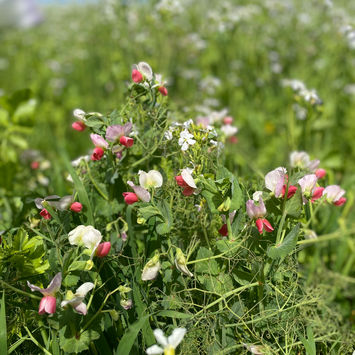
Caring for our land.
What exactly is Regenerative Farming?

In recent years, regenerative farming has gained popularity as an alternative to conventional agriculture. Regenerative farming is a holistic approach to agriculture that aims to improve soil health, increase biodiversity, and enhance ecosystem services, all while producing healthy food for people. In this blog post, we will explore what regenerative farming is and why it is becoming increasingly popular.
Regenerative farming is a farming system that works with nature, rather than against it. It is based on the principles of agroecology, which seeks to create a sustainable food system by mimicking natural ecosystems. Regenerative farming involves practices that build soil health, such as using cover crops, reducing tillage, and integrating livestock into cropping systems. It also involves using diverse crop rotations, minimizing the use of chemicals, and fostering biodiversity in and around farms.
One of the key principles of regenerative farming is soil health. Soil health is essential for plant growth, nutrient cycling, and water retention. Regenerative farmers work to improve soil health by increasing the organic matter in the soil, which improves its structure, water-holding capacity, and nutrient availability. They also use techniques like crop rotations, cover cropping, and reduced tillage to minimize soil erosion and maintain soil health.
Another key principle of regenerative farming is biodiversity. Biodiversity refers to the variety of living organisms in an ecosystem. Regenerative farmers work to increase biodiversity by planting diverse crops, incorporating hedgerows, and creating habitat for beneficial insects and wildlife. This not only benefits the ecosystem but also helps to control pests and diseases, reducing the need for chemical inputs.


Regenerative farming also emphasizes the use of renewable resources and reducing waste. Farmers who practice regenerative farming may use renewable energy sources, such as solar or wind power, to reduce their dependence on fossil fuels. They may also minimize waste by composting and recycling agricultural by-products.
One of the main benefits of regenerative farming is its potential to mitigate climate change. Regenerative farming practices can sequester carbon in the soil, reducing the amount of carbon dioxide in the atmosphere. Additionally, regenerative farming can reduce greenhouse gas emissions by minimizing the use of synthetic fertilizers and pesticides, which are energy-intensive to produce and apply.
Regenerative farming is becoming increasingly popular among farmers and consumers alike. Many consumers are interested in supporting local, sustainable agriculture, and are willing to pay a premium for products that are produced using regenerative farming practices. For farmers, regenerative farming can improve soil health, reduce input costs, and increase the resilience of their farm systems.
Regenerative farming is a holistic approach to agriculture that seeks to improve soil health, increase biodiversity, and enhance ecosystem services. By working with nature, regenerative farming practices can create a sustainable food system that benefits both people and the environment. As awareness of the importance of regenerative farming grows, it is likely to become an increasingly important part of our food system in the years to come.







